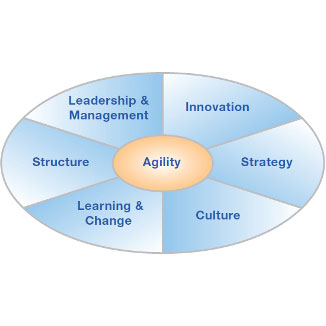
Organisational agility
Understanding Thought Leadership in the Context of Organizational Effectiveness
Thought leadership is a concept often associated with individuals or organizations possessing innovative ideas and influencing others in their industry. In the realm of organizational effectiveness, thought leadership takes on a pivotal role. At its core, thought leadership involves being recognized as an authority in a specific field, characterized by the ability to innovate, influence, and inspire both within and beyond the organization.
Key qualities that distinguish thought leaders include their creativity, vision, and proactive stance toward emerging trends and challenges. These leaders are not merely knowledgeable; they are pioneers who push the boundaries of conventional thinking, thus injecting fresh perspectives and innovative solutions into the organizational landscape. Their ability to influence extends beyond mere persuasion; it encompasses the capacity to inspire and mobilize others towards achieving common goals and embracing new paradigms.
Within an organization, thought leadership serves as a catalyst for change and continuous improvement. By fostering a culture that values and promotes thought leadership, organizations can enhance their adaptability and responsiveness to market dynamics. This, in turn, elevates the organization’s reputation and credibility, making it a trusted and respected entity in the industry.
Thought leadership also plays a crucial role in strategic decision-making and problem-solving. Thought leaders bring unique insights and a depth of understanding that are instrumental in guiding the organization towards its long-term objectives. They help in identifying opportunities, mitigating risks, and crafting strategies that align with the overarching goals of the organization. Their perspectives are invaluable in navigating complex business environments and ensuring that the organization remains competitive and forward-thinking.
In conclusion, thought leadership is integral to organizational effectiveness. By cultivating thought leaders, organizations can drive innovation, foster a culture of continuous improvement, and strategically steer towards sustainable success. Thus, embedding thought leadership into the organizational fabric is not just beneficial but essential for long-term viability and excellence.
Implementing Thought Leadership Strategies to Boost Organizational Effectiveness
To harness thought leadership effectively, it is crucial to begin by identifying and cultivating potential thought leaders within the organization. The initial step involves recognizing individuals who exhibit both strategic insight and the ability to influence and inspire others. These potential thought leaders can be found at various levels and across different departments. Once identified, the next focus should be on nurturing their skills and vision through tailored professional development programs, including leadership training sessions, mentorship opportunities, and dedicated time for innovative thinking.
Creating platforms and opportunities for thought leaders to share their insights is paramount. This can be achieved by establishing internal and external communication channels such as blogs, newsletters, and internal social networks. Organizing workshops and conferences where thought leaders can present their ideas not only amplifies their voices but also fosters a culture of knowledge-sharing within the organization. This practice helps in embedding thought leadership into the organizational fabric, thereby enhancing overall effectiveness.
Organizational culture plays a vital role in supporting thought leadership. An environment that encourages creativity, open dialogue, and calculated risk-taking is essential. Leaders must champion and model these values, ensuring that employees feel safe to express innovative ideas and take bold steps without the fear of failure. Regular town hall meetings, brainstorming sessions, and innovation labs are excellent ways to promote such a culture.
Examples of successful implementation of thought leadership strategies can be seen in a range of organizations. For instance, tech companies like Google and Microsoft have established frameworks that encourage continuous innovation and thought leadership among their employees. These strategies have had measurable impacts, such as improved organizational performance, enhanced employee engagement, and strengthened market positioning. By investing in thought leadership, these organizations have capitalized on their collective expertise, leading to sustainable growth and success.



